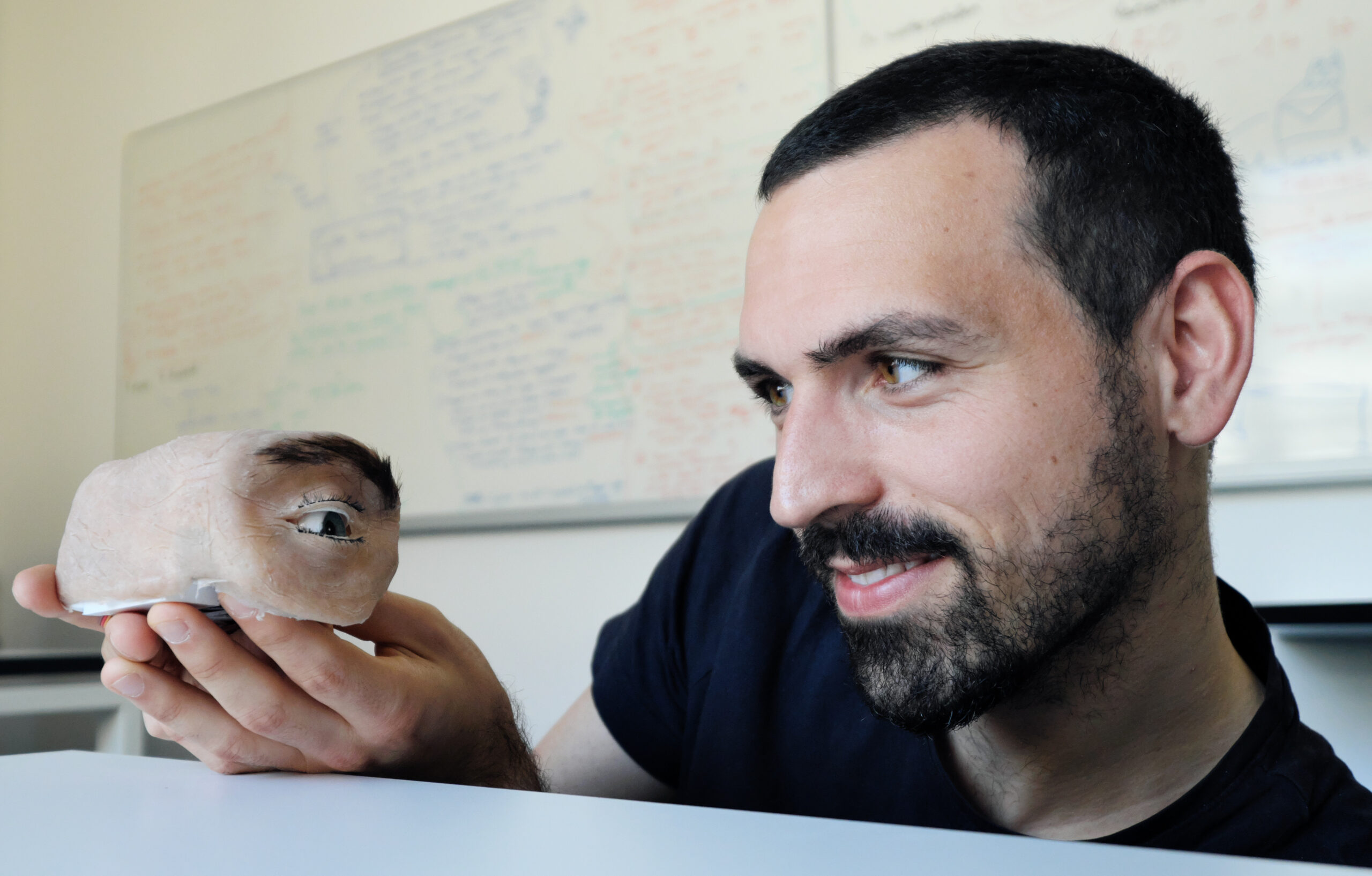Saarbrücken, April 13rd, 2021: Design is female and the future belongs to it. This was already predicted by one of the world’s largest advertising agencies, Grey from Düsseldorf, in a study in 2010. Whether we feel sympathy or antipathy for something determines where we go, which products we want to buy, what attracts us or what repels us. The origin of the Applephone lies in the motivation of the Apple company, in design. Created for the design industry, made for the advertising industry. We remember the Macintosh. While the competitor from Asia usually appears technologised, as befits its origins in Taiwan, China or Japan.
When we have learnt that an eye only has the ability to see and the rest depends on the internal networking in the brain, then it will be time to try to find out how the eye actually works. We are making a leap and have arrived at the miniature. In the spirit of interaction, technology today is so small that we are moving into a new evolution of thinking and realising that nothing will remain hidden, everything will become visible. It was once the mirror, or at least something that mirrored us, that ensured that we changed our thinking and saw who we were during the Renaissance. Where were we? Oh yes, just a few years ago there were selfies, or whatever they were called. Anyway, we were finally able to present ourselves and now technology is going to teach us the hard way. We became, we were recognised, as the first testament of the Bible would describe it.
The path is cleared for realisation, we have to toil, we fall out of paradise and have to explore the new world. Born into a new world, no idea what awaits us there. Honestly, what will await us? What no eye has ever seen, no ear has heard and no mouth has spoken, before us lies artificial intelligence, which will be given to us as a sign of the image. We mirror ourselves and the human eye, technologised in miniature, makes this clear to us. Born anew, the pandemic that teaches us to accelerate with its mutants. We are running after it, politics is learning for the first time to ramp up the production of laws itself and to think faster. Who would have ever expected that! And one day, when we have finished arguing about data protection, privacy and everything else that will be and come, we will realise that we have been recognised from time immemorial and that we are so stark naked, clothing is merely a protective suit against the cold, mechanical damage and a truthful element of interpersonal communication. Let’s dress warmly as a precaution.
Originalpublication:
Die Originalpublikation unter dem Titel „Eyecam: Revealing Relations between Humans and Sensing Devices through an Anthropomorphic Webcam“ wurde von der weltweit größten Konferenz im Bereich Mensch-Maschine-Interaktion akzeptiert. Im Mai wird sie auf der 32. „ACM Conference on Human Factors in Computing Systems (CHI)“ in Yokohama (Japan) veröffentlicht, Neben Marc Teyssier und Marion Koelle waren Paul Strohmeier, Bruno Fruchard und Professor Jürgen Steimle, allesamt Universität des Saarlandes, an dem Projekt beteiligt. Eine Preprint-PDF-Version des Papers ist zu finden unter:
https://hci.cs.uni-saarland.de/wp-content/uploads/projects/critical_design/eyeca…
Further Informationen:
https://hci.cs.uni-saarland.de/projects/eyecam/
https://marcteyssier.com/projects/eyecam/ – Videodemonstration
https://chi2021.acm.org/
https://erc.europa.eu/projects-figures/stories/tech-filled-tattoos-interact-surr…
https://www.uni-saarland.de/universitaet/aktuell/artikel/nr/23327.html –
PictureSource: Computer scientist Marc Teyssier with the anthropomorphic camera ‘Eyecam’. Thorsten Mohr, Saarland University



Schreibe einen Kommentar